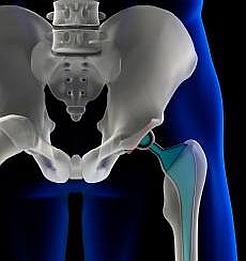
A 2009 study conducted by the Australian Joint Registry has indicated the recorded failure rate of Wright Profemur Z hip replacement system, an artificial hip implant manufactured by Wright Medical Technology. Metal-to-metal him implants have been originally designed to remain functional for up to 15 years. Albeit the reports say that Wright Profemur Z carried out an 11.3% failure rate with just three years from the time it was implanted.
One of the most commonly reported failures involving the Wright Profemur Z hip replacement system is its tendency to fret, leading to its breakage while still implanted, resulting to fractures among recipients. In many cases, a revision procedure has been required in order to fix the defects and problems that may have been caused by the hip implant.
Contrary to conventional hip replacements that feature a stationary neck design, the Wright Profemur Z hip replacement offers a modular design which includes a flexible neck (“stem”). Multiple components comprise the structure of the device. Being considered as a distinct development in artificial joint technology, it has been designed to closely replicate a patient’s leg length, promoting a minimally invasive approach.
Its ingenious design may have been the source of the malfunction, according to several medical professionals.
According to reports, the device’s tendency to degrade and eventually break may have been brought about by its flexibility. Some say it has been due to this main feature that recipients sustained injuries and possible permanent damages.
Plaintiffs from Colorado have reportedly filed a Wright Profemur Z hip replacement lawsuit against its manufacturer in December 2010, and January 2011. Injuries associated to the device were the involved claims.
A plaintiff reported a complaint that the device’s acetabular section was unable to come together with her pelvis. During the revision surgery, her orthopedic surgeon discovered that the device was barely attached to her pelvis.
Several experts also believe that the Wright Profemur Z’s high failure rate may have also been contributed by its release to the market with the absence of mandatory clinical trials.
Having gone through the 510 (k) process, a device approval process by the United States Food and Drug Administration, the Wright Profemur Z was able to enter the market after having proven that its safety and efficacy is “substantially equivalent” to other similar devices already out in the market. With the absence of series of adequate testing, the device was able to enter the market and be implanted to patients.
URL References:
http://phoenix.injuryboard.com/medical-devices-and-implants/wright-profemur-z-hip-is-an-112-failure-rate-too-high.aspx
http://www.squidoo.com/wright-profemur-z-lawsuit
One of the most commonly reported failures involving the Wright Profemur Z hip replacement system is its tendency to fret, leading to its breakage while still implanted, resulting to fractures among recipients. In many cases, a revision procedure has been required in order to fix the defects and problems that may have been caused by the hip implant.
Contrary to conventional hip replacements that feature a stationary neck design, the Wright Profemur Z hip replacement offers a modular design which includes a flexible neck (“stem”). Multiple components comprise the structure of the device. Being considered as a distinct development in artificial joint technology, it has been designed to closely replicate a patient’s leg length, promoting a minimally invasive approach.
Its ingenious design may have been the source of the malfunction, according to several medical professionals.
According to reports, the device’s tendency to degrade and eventually break may have been brought about by its flexibility. Some say it has been due to this main feature that recipients sustained injuries and possible permanent damages.
Plaintiffs from Colorado have reportedly filed a Wright Profemur Z hip replacement lawsuit against its manufacturer in December 2010, and January 2011. Injuries associated to the device were the involved claims.
A plaintiff reported a complaint that the device’s acetabular section was unable to come together with her pelvis. During the revision surgery, her orthopedic surgeon discovered that the device was barely attached to her pelvis.
Several experts also believe that the Wright Profemur Z’s high failure rate may have also been contributed by its release to the market with the absence of mandatory clinical trials.
Having gone through the 510 (k) process, a device approval process by the United States Food and Drug Administration, the Wright Profemur Z was able to enter the market after having proven that its safety and efficacy is “substantially equivalent” to other similar devices already out in the market. With the absence of series of adequate testing, the device was able to enter the market and be implanted to patients.
URL References:
http://phoenix.injuryboard.com/medical-devices-and-implants/wright-profemur-z-hip-is-an-112-failure-rate-too-high.aspx
http://www.squidoo.com/wright-profemur-z-lawsuit
 RSS Feed
RSS Feed